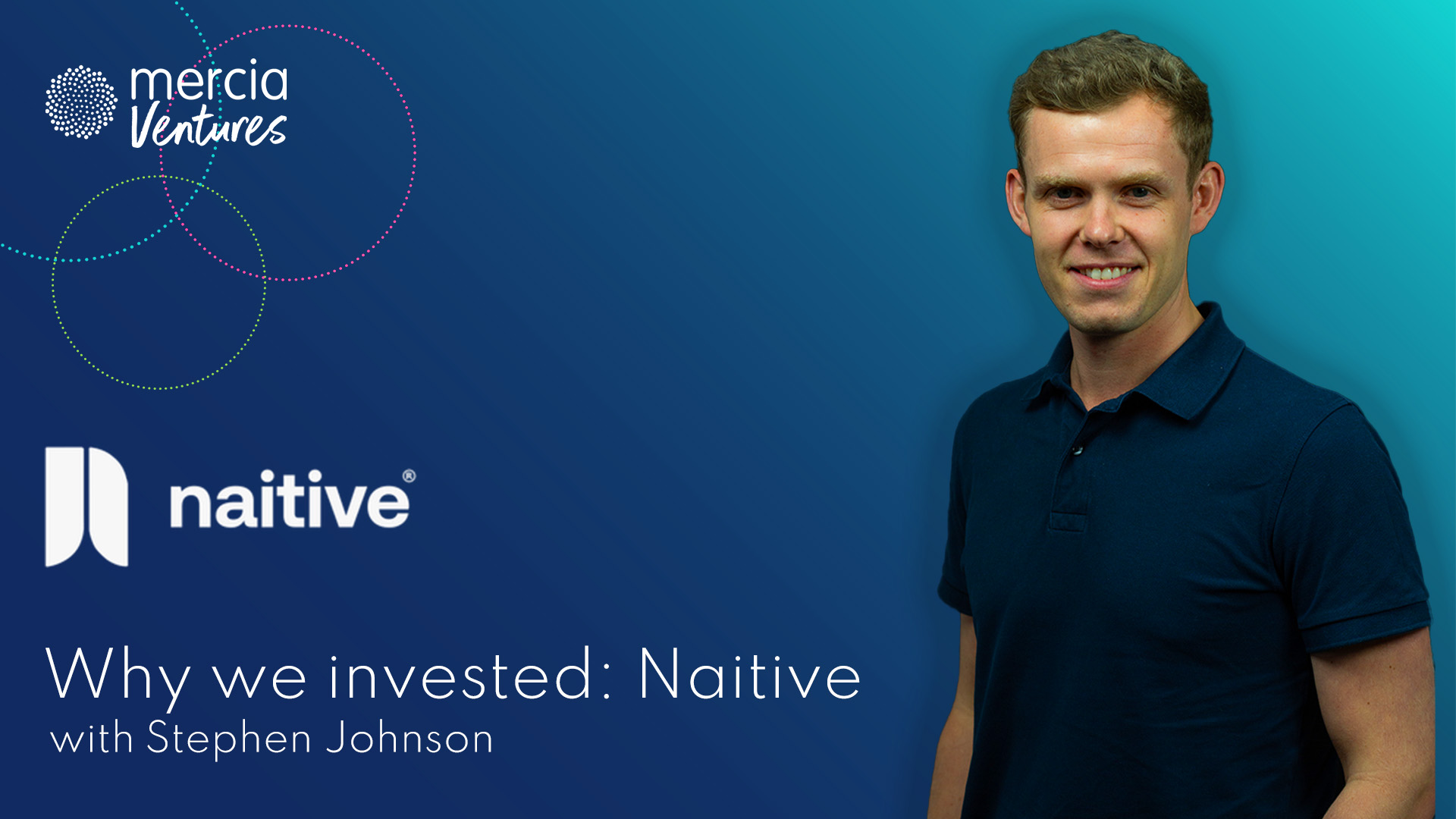Mercia Ventures first invested in Naitive’s seed round back in 2021.
Naitive are seeking to redefine how bone diseases are diagnosed and managed, starting with one of the most prominent chronic diseases – Osteoporosis. The team have largely operated in the shadows to date, but following a string of significant product and commercial milestones, it made sense to start talking more about progress and future plans.
There’s a lot to look forward in growing old, however, for most, it will inevitably be afflicted by either sudden or gradual declines in health. Until we can unlock cellular rejuvenation or other approaches to limit the aging process, we, as a species, need to continue to develop and adopt more effective ways of preventing and mitigating the inevitable effects of aging.
Osteoporosis is one of the most prominent age-related chronic diseases, affecting an estimated 200 million people globally, or one in three women and one in five men over the age of 50. Despite affecting such a large proportion of the elderly population, bone health receives less attention than the well-known “big 5” chronic diseases, and more women will suffer an osteoporotic fracture than heart attack, stroke, and breast cancer combined. Often referred to as the “silent killer” due to its lack of symptoms, one study estimated three in four patients with osteoporosis remain undiagnosed. Despite the introduction of screening programmes across most major health systems, the first presenting symptom for many is a bone fracture in one of three commonly affected body parts – the hip, spine, or wrist. Worse still, it is estimated that a patient’s mortality risk doubles in the first year following a fracture. The immediate and downstream costs to health systems and societies of all this are substantial, with fragility fractures costing global health systems $400bn. Although these are truly sobering numbers, as populations start to live longer they are only going to increase.
The current care pathway for osteoporosis remains less than optimal. The ‘gold standard’ diagnostic is via a “dual-energy x-ray absorptiometry” (DEXA) scan, which provides a measurements of a patient’s bone mineral density (BMD). However, requiring physicians to screen patients for risk factors that would indicate the need for a DEXA scan has proven unsuccessful, with physician burnout and competing health concerns preventing this from being effective. Furthermore, even when a DEXA scan is ordered, BMD only accounts for an estimated 60% of bone strength variation, with other contributing variables including bone type composition, bone quality, and bone morphology. The result is that whilst still the gold standard, it isn’t a reliable predictor of what patients and health providers really care about – the risk of a bone fracture. Unfortunately, DEXA remains the best and most widely available approach that we have. Until now.
In 2021, we led the seed round in Naitive – a company seeking to redefine how bone diseases are screened, diagnosed, treated, and monitored. Having operated in stealth until recently, we first met the team in 2020 and were immediately impressed by their clarity of vision and early product performance. The founder and CEO, Will Briggs, is a graduate of Cambridge with an MD/PhD in Medicine and Biochemistry and subsequently, he saw the patient need first hand through his work as a physician at Chelsea & Westminster Hospital. Having founded Naitive and built an early prototype, the team secured access to one of the largest musculoskeletal data sets available globally.
Their initial product, OsteoSight™, comprises a fully explainable image pre-processing pipeline and an inference model that accurately and reliably predicts DEXA BMD measurements from plain film X-rays. As a more common and accessible imaging modality than DEXA, the intention with this early product is to enable healthcare providers to opportunistically capture more patients showing signs of osteoporosis earlier than the current care pathway, such that appropriate treatment interventions can be introduced. Aside from various supplements and drugs, simple weight-bearing exercise can have a huge impact on improving bone health and preventing osteoporosis. In summer 2023, OsteoSight was awarded Breakthrough Device Designation from the FDA, a pivotal accelerator to bringing the product to market. The team is also partnering with several organisations to validate the technology and its clinical application in a real-world setting, including with the largest orthopaedic healthcare provider network in the US.
In parallel, the team is working on expanding their product suite, with an exciting platform and pipeline of products in development. Their goal: to offer healthcare providers a comprehensive solution to help them better manage their patients bone health.
Years of foundational research in radiomics are now paving the way for the development and crucially, real-world adoption, of technologies like those from Naitive. We believe Naitive’s vision for an end-to-end digital care pathway will deliver improved patient outcomes, through care-gap identification and earlier interventions, and, as a result, substantial cost savings to healthcare payors.
